|
Diseases of Poultry
By Ivan Dinev, DVM, PhD
|
REOVIRUS INFECTIONS
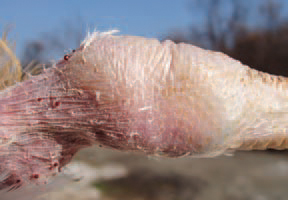
271.Viral arthritis/tenosynovitis. The most frequent reovirus-associated disease in poultry is viral arthritis. Clinically it is manifested by lameness and swellings affecting primarily tarsometatarsal joints and the feet. Many infected birds are in a good general condition, but some could be lethargic and exhausted. The mortality is very low. The infections affect predominantly meat type poultry.
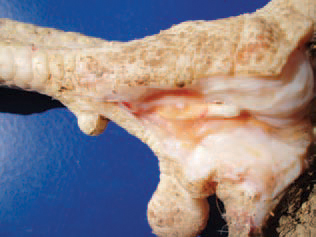
272.In some cases, joint cavities or tendon sheaths contain a small amount of straw-yellow exudate whereas in other the exudate is haemorrhagic or fibrinous.
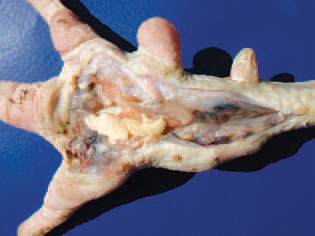
273.. Fibrinous tenosynovitis. The inflammation of the tendon progresses to a chronic type lesion characterized by tissue fibrosis in the affected area. The aetiological agent is a reovirus, member of the Orthoreovirus genus, Reoviridae family. Several serotypes are identified. For their identification, the agar gel precipitation test could be used. Reoviruses are highly resistant to a number of environmental factors (temperature, pH etc.).
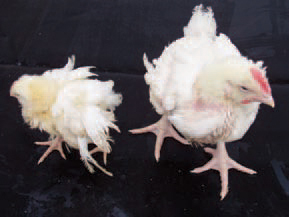
274.. Stunting syndrome in broilers. The stunting syndrome in broilers is associated with a reovirus infection but according to some studies, the role of the reovirus is probably secondary. It is characterized by a considerably reduced live weight in affected birds and a various degree of ununiformity in the flock varying from 5-10% to 40-50%, usually seen after the age of 14 days.

275.The growing primary wing feathers are abnormally big for chickens with retarded growth, they protrude at various angles, so the disease is termed ..helicopter disease". One-day old chickens are the most susceptible to the infection.

276.Usually, a high-degree atrophy of the pancreas is observed. Reoviruses are shed with faeces and could contaminate the egg shells. The transmission of the infection to susceptible chickens is realized horizontally. The vertical route of transmission is also proved. Reoviruses could persist in infected birds for more than 40 weeks.
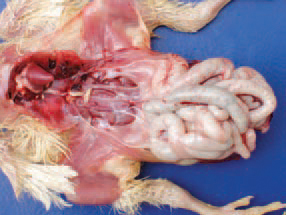
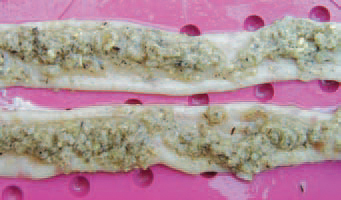
277.278.The small intestine is pale, dilated and contain indigested forage. The tentative diagnosis of viral arthritis and stunting syndrome could be made on the basis of symptoms and lesions. The detection of reovirus antibodies via ELISA supports the diagnosis. Viral arthritis should be differentiated from M. synov/ae-induced, staphylococcal arthrites and the spontaneous rupture of the tendon of the gastrocnemius muscle. The vaccination of broiler breeder flocks with live or inactivated vaccines protects one-day-old chicks. Infected birds should be removed from the premises. The iodine disinfectants are considered effective for inactivation of agents.






